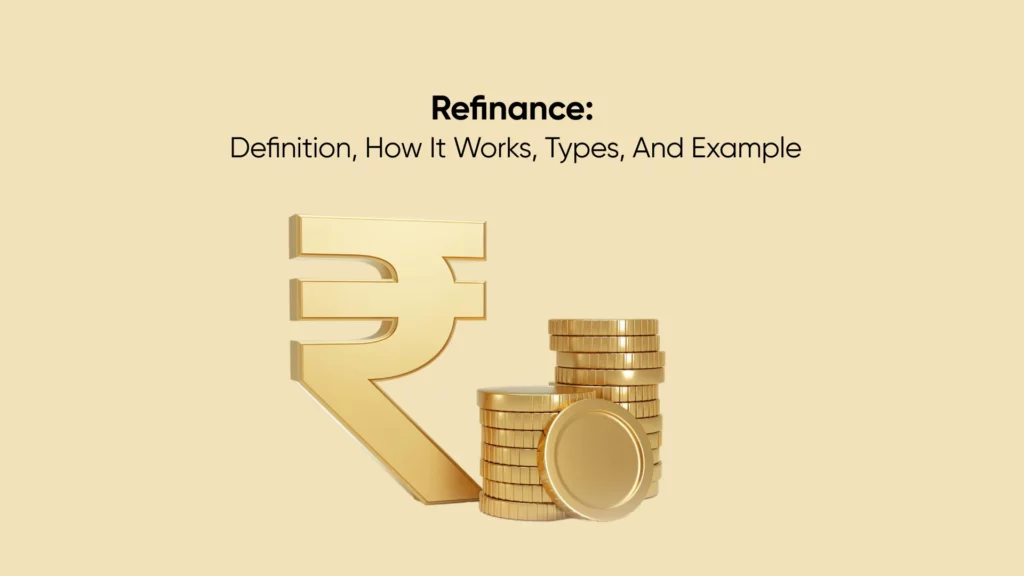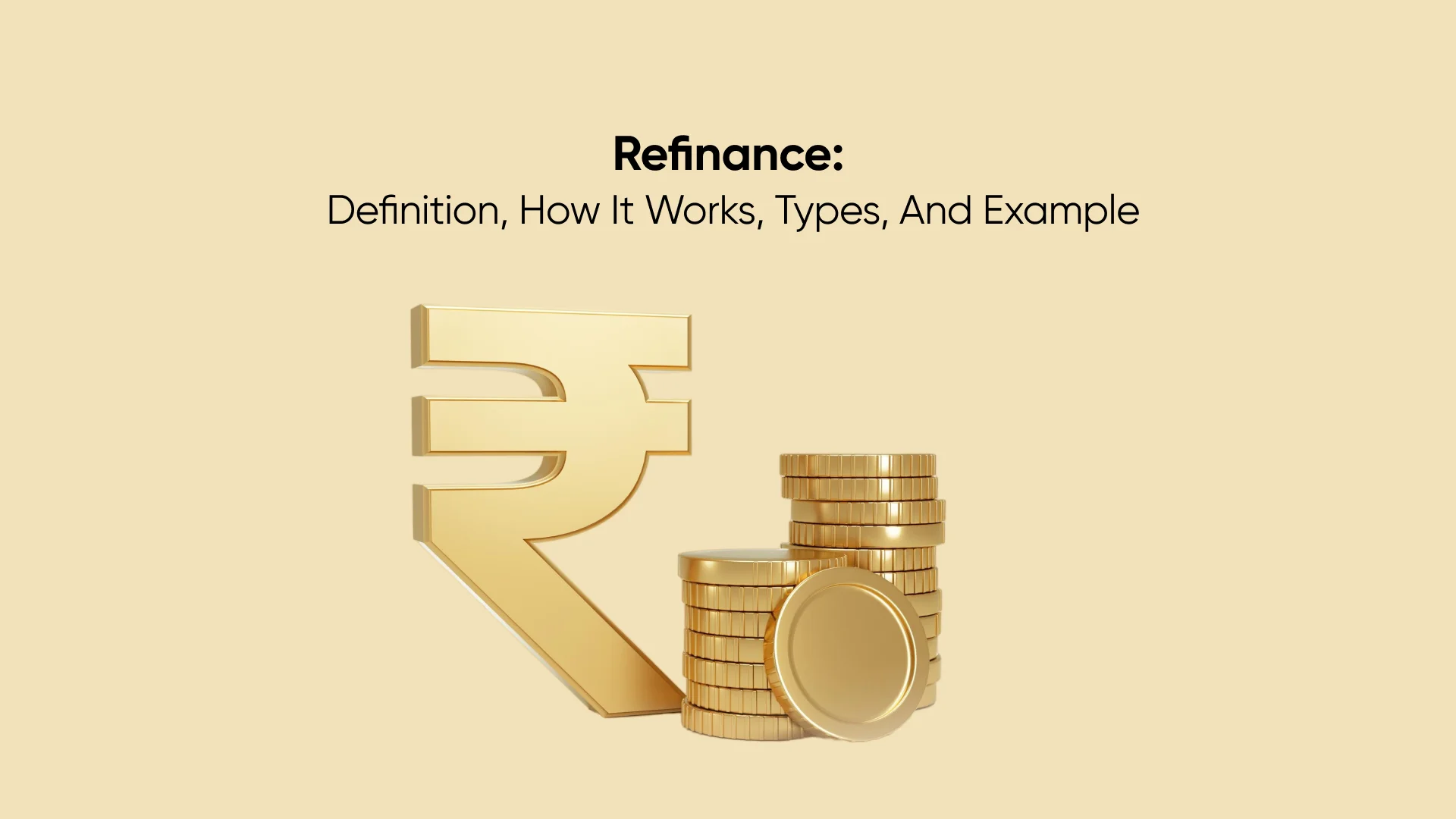Refinance: Definition, How It Works, Types, and Example

Refinancing is a financial strategy that involves replacing an existing loan with a new one, typically to secure better terms or interest rates. This practice is common among individuals and businesses seeking to improve their financial position. Refinance options are available for various types of loans, including mortgages, auto loans, and student loans. Understanding the refinance meaning is crucial for making informed decisions about managing debt.
When exploring what is refinancing a loan, it is important to recognize the potential benefits and drawbacks. Refinancing can lower monthly payments, reduce interest rates, or change the loan term. For example, transitioning from a 30-year mortgage to a 15-year mortgage can significantly decrease the amount of interest paid over the loan’s life. Additionally, refinancing can provide access to better loan products or terms that were not available during the initial borrowing period.
Table of Contents
ToggleWhat is Refinancing?
Refinancing is the process of replacing an existing loan with a new one, typically to achieve better financial terms. The refinance meaning involves renegotiating the terms of your loan, which can include lower interest rates, reduced monthly payments, or an adjusted repayment period.
For instance, homeowners often refinance their mortgages to take advantage of lower interest rates, which can result in significant savings over the loan’s term. Similarly, individuals with personal loans might opt for refinancing to secure lower rates or more manageable personal loan repayment terms.
Additionally, for those looking for quick solutions, short term loans online offer refinancing options, though often with higher interest rates. It’s essential to carefully consider the costs and benefits before proceeding with a refinance to ensure it aligns with your financial goals.
How Does Refinancing Work?
Refinancing involves a straightforward process that starts with assessing your current loan terms and comparing them with potential new offers. To understand refinance meaning, consider it as replacing your existing loan with a new one to achieve better financial terms. The first step is to gather information about your current loan, such as the interest rate, remaining balance, and repayment period. This will help you determine what is refinancing a loan and how it might benefit you.
Next, you need to shop around for new loan offers. This could involve contacting various lenders or using online platforms to compare rates and terms. For those seeking quick solutions, short term loans online can be considered, although they often come with higher interest rates. Once you find a suitable offer, you apply for the refinance. The lender will evaluate your financial situation, credit score, and other relevant factors before approving the new loan.
After approval, the new loan is used to pay off the existing loan, and you start making payments on the new loan under the agreed terms. This process can help reduce monthly payments, lower interest rates, or adjust the loan term. For instance, someone needing an urgent personal loan may refinance to secure more favorable personal loan repayment terms.
Types of Refinancing
Understanding the different types of refinancing options can help borrowers choose the best strategy for their financial needs. Whether you are looking to lower your interest rates, reduce monthly payments, or access cash, various refinancing methods are available to cater to these objectives. Knowing what is refinancing a loan and the specific refinance meaning for each type can guide you in making the most beneficial decision. Here are the main types of refinancing:
Rate-and-Term Refinancing
Rate-and-term refinancing is the most common type. It involves changing the interest rate, the loan term, or both. This type of refinance can help reduce monthly payments or shorten the loan duration.
For example, homeowners might refinance their mortgage to take advantage of lower interest rates, potentially saving thousands over the loan’s lifetime. This type of refinancing is suitable for those looking to improve their personal loan repayment terms without accessing extra cash.
Cash-in Refinancing
Cash-in refinancing allows borrowers to pay a lump sum toward their loan balance during the refinancing process. This option is ideal for those who want to lower their loan-to-value ratio or reduce their monthly payments. For instance, if someone has an urgent personal loan with high interest, they might use cash-in refinancing to lower the overall debt and secure better terms.
Cash-out Refinancing
Cash-out refinancing enables borrowers to take out a new loan for more than the amount owed on the existing loan, receiving the difference in cash. This type is beneficial for those needing funds for significant expenses like home renovations or loans for debt consolidation. Data suggests that in India, cash-out refinancing is popular among homeowners looking to leverage their home equity for other financial needs.
Consolidation Refinancing
Consolidation refinancing combines multiple loans into a single new loan with a more favorable interest rate or repayment term. This method simplifies personal loan repayment by merging debts, which can include credit card balances, student loans, and other liabilities. For those with multiple short term loans online, consolidation can reduce the complexity and cost of managing several debts.
Benefits and Drawbacks of Refinancing
| Aspect | Benefits | Drawbacks |
| Lower Interest Rates | One of the primary benefits of refinancing is the potential to secure lower interest rates. This can result in significant savings over the loan term.. | While lower interest rates are beneficial, refinancing costs, such as application fees, appraisal fees, and closing costs, can offset savings. These costs can add up quickly, making it essential to calculate if the benefits outweigh the expenses. |
| Improved Cash Flow | By reducing monthly payments, refinancing can improve cash flow, making it easier to manage finances and allocate funds to other expenses. This is particularly helpful for individuals with short term loans online or those needing an urgent personal loan. | Extending the loan term to reduce monthly payments can lead to paying more interest over the loan’s life. For example, switching from a 15-year to a 30-year loan may lower payments but result in higher total interest paid. |
| Debt Consolidation | What is refinancing a loan if not a tool for debt consolidation? Refinancing can combine multiple debts into one, simplifying personal loan repayment and potentially lowering interest rates on consolidated debts. This can be particularly beneficial for managing high-interest credit card debt or multiple loans. | Consolidating debt through refinancing can sometimes extend the repayment period, leading to more interest paid over time. Additionally, if not managed properly, it can lead to accumulating more debt, negating the benefits of consolidation. |
| Access to Equity | Cash-out refinancing allows homeowners to tap into their home equity for large expenses like home improvements or medical bills. This can provide much-needed funds for significant investments or urgent needs. | Cash-out refinancing increases the loan balance and monthly payments. If property values decline, borrowers may owe more than their home’s worth, leading to financial instability. |
| Rate and Term Flexibility | Refinance meaning includes the flexibility to switch from a variable rate to a fixed rate, or vice versa, providing stability in payments or potential savings. Adjusting loan terms can better align with changing financial situations. | The process of refinancing can be time-consuming and involve extensive paperwork. Additionally, it can temporarily impact credit scores due to hard inquiries and the closing of old accounts. |
Example of Refinancing
To better understand what is refinancing and its practical applications, it’s helpful to look at real-world examples. These scenarios illustrate how refinancing can be used to achieve lower interest rates, reduce monthly payments, and manage debt more effectively. Whether it’s a mortgage, auto loan, student loan, or credit card debt, refinancing offers a pathway to improved financial health. Here are some specific examples:
Mortgage Refinancing
Rajesh, a homeowner in Mumbai, decided to refinance his 30-year mortgage after interest rates dropped significantly. Initially, he was paying an interest rate of 8% on a ₹50 lakh loan. By refinancing to a 15-year mortgage at a 6% interest rate, Rajesh not only reduced his monthly payments but also saved over ₹10 lakh in interest over the loan’s term. This refinance meaning showcases how homeowners can utilize lower interest rates to achieve substantial financial savings.
Auto Loan Refinancing
Priya had an auto loan with a 12% interest rate, which was quite high. She explored what is refinancing a loan and decided to refinance her auto loan with another lender offering an 8% interest rate. This reduced her monthly payments and the total interest paid over the loan period. Auto loan refinancing is a practical example of how refinancing can make significant differences in personal finances.
Student Loan Refinancing
Amit, a recent graduate, had multiple student loans with varying interest rates. By consolidating and refinancing these loans, he secured a single loan with a lower interest rate of 9%, compared to his previous rates ranging from 11% to 14%. This move simplified his personal loan repayment process and reduced his monthly burden, showcasing what is refinancing in the context of student loans.
Credit Card or Personal Loan Refinancing
Shalini had several credit card debts and a high-interest urgent personal loan. She opted for a short term loans online refinancing option to consolidate her debts into a single loan with a lower interest rate of 10%. This decision helped her manage her finances better by reducing her overall monthly payments and making her debt more manageable. This example illustrates the benefits of refinancing in simplifying and reducing the cost of multiple high-interest debts.
Steps to Refinance a Loan
Understanding what is refinancing a loan and how to proceed can help borrowers achieve better financial terms. Here are the essential steps:
Assess Your Current Loan: Evaluate the terms of your existing loan, including the interest rate, balance, and repayment period. This helps in understanding the potential benefits of refinancing.
Check Your Credit Score: A good credit score is crucial for securing better rates. Ensure your credit report is accurate, and work on improving your score if necessary.
Research Lenders: Compare offers from multiple lenders to find the best refinance terms. This includes traditional banks, credit unions, and short term loans online providers.
Calculate Costs: Understand the costs associated with refinancing, such as application fees, appraisal fees, and closing costs. Ensure the savings outweigh these expenses.
Apply for the Loan: Submit your application to the chosen lender. Be prepared with documentation such as income proof, bank statements, and details of the existing loan.
Close the Loan: Upon approval, review the new loan terms carefully. Once satisfied, complete the closing process and start making payments on the new loan.
By following these steps, borrowers can effectively manage the refinancing process to achieve better personal loan repayment terms, whether they are dealing with a home loan, auto loan, or an urgent personal loan.
When to Consider Refinancing?
Let us have a look at the situations where refinancing can be an advantageous option for you:
Lower Interest Rates: If current interest rates are significantly lower than your existing loan’s rate, refinancing can reduce your monthly payments and overall interest costs. This applies to all loan types, including mortgages and short term loans online.
Improved Credit Score: A higher credit score can qualify you for better loan terms. If your credit has improved since you took out the original loan, refinancing might offer more favorable rates.
Change in Financial Situation: If your income has increased, you might consider refinancing to a shorter loan term for faster payoff and reduced interest. On the other hand, if you need to lower monthly payments, extending the term can help.
Debt Consolidation: Refinancing can consolidate multiple debts into one loan, simplifying personal loan repayment and potentially reducing interest rates. This is especially useful for managing high-interest debts.
Home Equity Access: Leveraging home equity, cash-out refinancing can provide funds for significant expenses, such as home renovations or medical bills, for homeowners.
Urgent Financial Needs: In cases of urgent financial needs, such as unexpected expenses, refinancing can provide immediate relief. For instance, an urgent personal loan can be refinanced to secure better terms.
Conclusion
Refinancing can offer significant savings and improved terms, whether it’s for a home loan, auto loan, student loan, or urgent personal loan. Data shows that in India, borrowers who refinance their home loans can save up to 2-3% on interest rates, leading to considerable financial relief.
Moreover, refinancing can simplify personal loan repayment by consolidating multiple debts into a single, more manageable loan. For those with short term loans online, refinancing can also provide better interest rates and repayment terms, increasing overall financial stability.
Frequently Asked Questions
No, loan refinancing involves obtaining a new loan to pay off an existing one with better terms. Debt restructuring modifies the current loan’s terms to help borrowers manage repayment difficulties.
Consider refinancing when interest rates drop, your credit score improves, or you need to reduce monthly payments. It’s also beneficial for consolidating multiple debts into one manageable loan.
Refinancing can temporarily lower your credit score due to hard inquiries and closing the old account, but proper management can improve your score over time.
Yes, refinancing a personal loan can lower interest rates and monthly payments or provide better terms, especially if your credit score has improved since taking the original loan.
Refinancing a personal loan after a year can be beneficial if interest rates have dropped or your financial situation has improved, securing better terms and reducing costs.
Yes, refinancing can cause a temporary drop in your credit score due to hard inquiries and account changes, but timely payments on the new loan can improve your score over time.
There’s no set limit on refinancing a personal loan, but frequent refinancing can harm your credit score and incur additional fees, so it should be done cautiously.
Yes, you can refinance loans multiple times, provided you meet the lender’s criteria each time. Consider the costs and credit impact before doing so.
- Assess current loan terms.
- Check your credit score.
- Research and compare lenders.
- Calculate costs.
- Apply for the new loan.
- Close the old loan and start paying the new one.
Refinancing costs may include application fees, appraisal fees, closing costs, and prepayment penalties. Ensure these costs don’t outweigh the benefits of refinancing.













